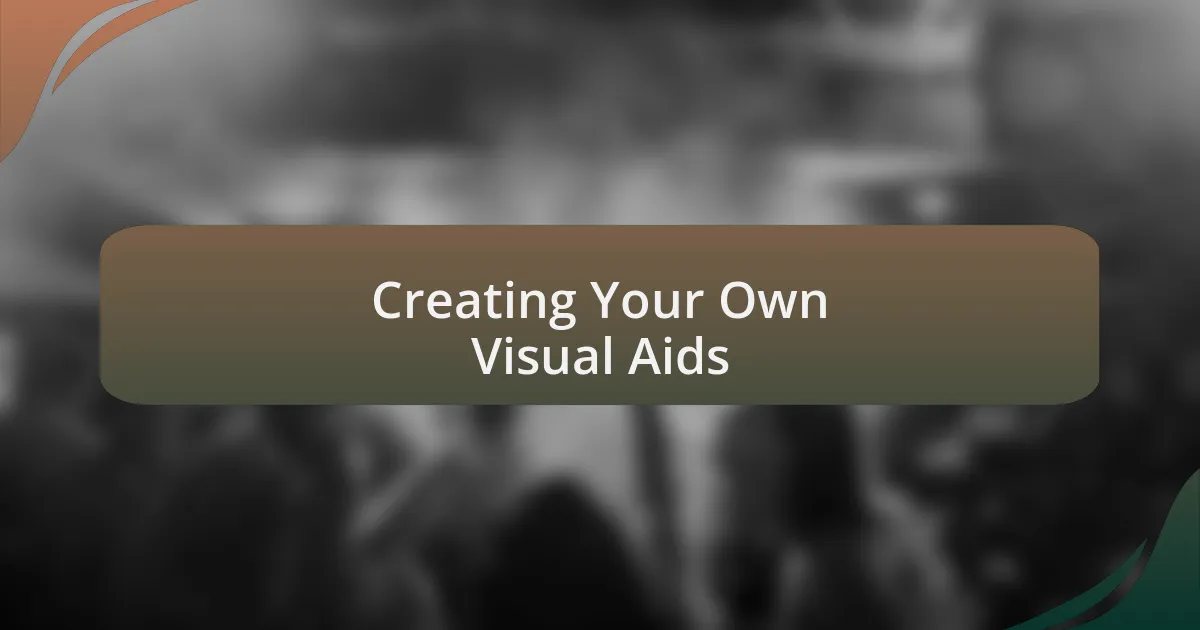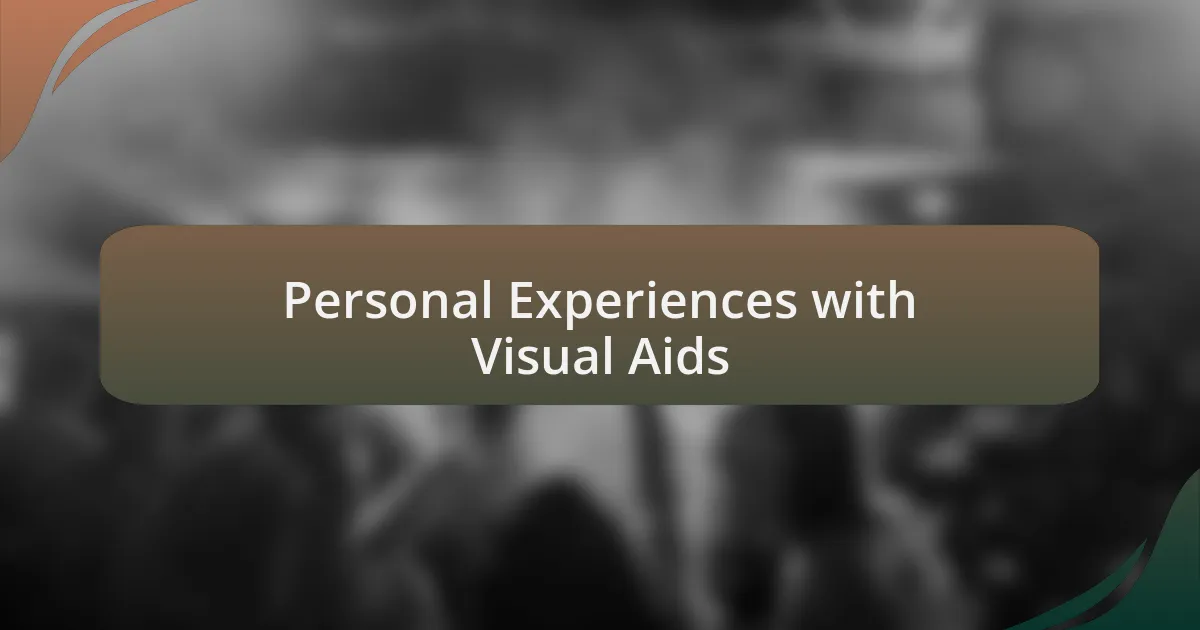Key takeaways:
- Creating visual aids, like colorful diagrams and flashcards, can help students grasp challenging concepts and stimulate discussions.
- Involving students in the creation of visual aids fosters creativity and promotes a collaborative learning environment.
- Using visuals, such as charts and timelines, can effectively connect concepts and inspire meaningful dialogue among students.
- Clarity in visual design is crucial; overly complex visuals can overwhelm students and hinder understanding.

Creating Your Own Visual Aids
When I create my own visual aids, I often start by reflecting on the specific concepts that my students find challenging. For instance, I remember struggling with music theory myself, and I found that using colorful diagrams really helped me grasp those abstract ideas. Have you ever thought about how a simple illustration can make a complex topic suddenly feel much more accessible?
In one of my classes, I designed a series of flashcards that featured both musical symbols and corresponding auditory examples. This method didn’t just help in memorization; it sparked lively discussions among students. It’s fascinating to see how a well-crafted visual can bridge gaps in understanding and encourage students to engage more deeply with the material.
Another technique I enjoy is incorporating student input when developing visual aids. I once invited my students to create their own charts, and the enthusiasm was palpable. Seeing their creativity unfold not only reinforced their own learning but also built a collaborative classroom environment. Have you considered inviting your students to contribute their ideas? It can be a game-changer in making the learning process more inclusive and enjoyable.

Personal Experiences with Visual Aids
When I first started using visual aids in my music lessons, I experimented with charts that illustrated the connection between chords and emotions. I vividly recall the moment when one student exclaimed that seeing the scales mapped out made the music resonate with her on a personal level. It was a breakthrough moment for me—understanding that visuals could transform feelings into something tangible.
In another instance, I decided to incorporate a visual timeline of music history. As I presented it, I watched as the students connected the dots between different musical eras and styles. Their curiosity sparked questions like, “How did the invention of the piano influence composers?” This conversation illustrated how visuals not only help convey information but also inspire richer dialogue among students, a hallmark of effective learning.
I’ve also faced challenges with visuals. Once, I created a complex infographic for a lesson, only to find that it overwhelmed my students. That experience taught me the importance of clarity and simplicity. Have you ever felt that way about a teaching tool? It’s a reminder that effective visual aids should enhance understanding, not complicate it. Learning from these moments has shaped my approach and has made my lessons more impactful.